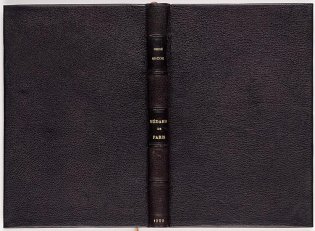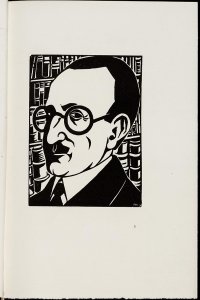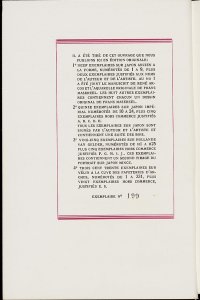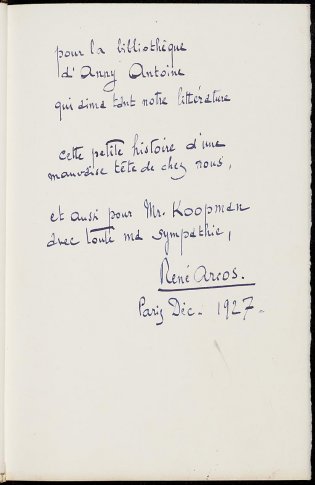Médard de Paris
Year: 1929
Author: René Arcos (1880 - 1959)
Artist: Frans Masereel (1889 - 1972)
Publisher: Éditions du Sablier
Parisian atmosphere
Medard de Paris (1929) was one of the last books that Masereel produced for Sablier, for his wood-engravings were not appreciated by French book dealers. Arcos had moved the publishing business from Geneva to Paris by then, but only a few publications ever appeared. In Médard de Paris, the seventy-fifth part in the series ‘oeuvres originales’, the main character Médard tells various stories about life in the French capital. Masereel produced drawings that breathe the atmosphere of the big cities of the 1920s: masses of people at brightly lit movie theatres and in the thick smoke of a fair express modernity in the interbellum period. Masereel had also previously sketched metropolitan life vividly in La ville (1925) and Bilder der Grossstadt (1926). In his vision, the crowded city is the source of human suffering and the cause for the loss of individuality. The impression that Masereel gives of Paris - a city where it always appears to be night - is therefore rather grim.
Médard de Paris contains an aquarelle, reproduced in pochoir,and nine wood-engravings by Masereel. The cover, the title page and the first page of text are printed in black and purple. The text is placed between thick black borders. The copy in the Koopman Collection is number 199 from a total number of 311 copies, and was provided with a personal dedication from Arcos to Anny Antoine and Louis Koopman. An original manuscript by Arcos was also added to the work, intended for the collection of Anny Antoine. This fragment was bound together with other correspondence between Arcos and Koopman, and can be accessed under shelf mark KW 77 G 3.


![Pochoir naar aquarel door Frans Masereel (p. [11])](/sites/default/files/styles/galerie/public/images/medard-de-paris-p11.jpg?h=b1ed2a52&itok=C_zQeq66)
![Pagina 64 en [65] met houtsnede door Frans Masereel](/sites/default/files/styles/galerie/public/images/medard-de-paris-p64-65.jpg?h=aa9bdc07&itok=YJhu0EKh)
![Houtsnede door Frans Masereel (p.[103])](/sites/default/files/styles/galerie/public/images/medard-de-paris-p103.jpg?h=434952ec&itok=cRxArLal)


